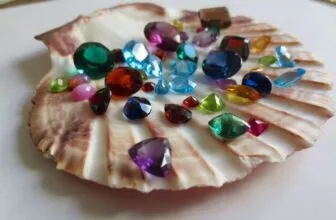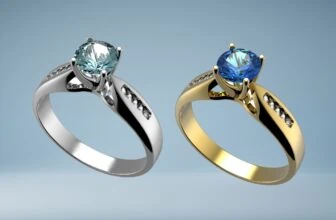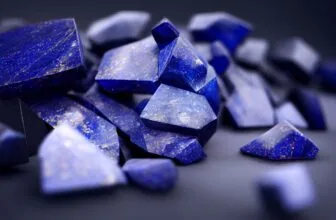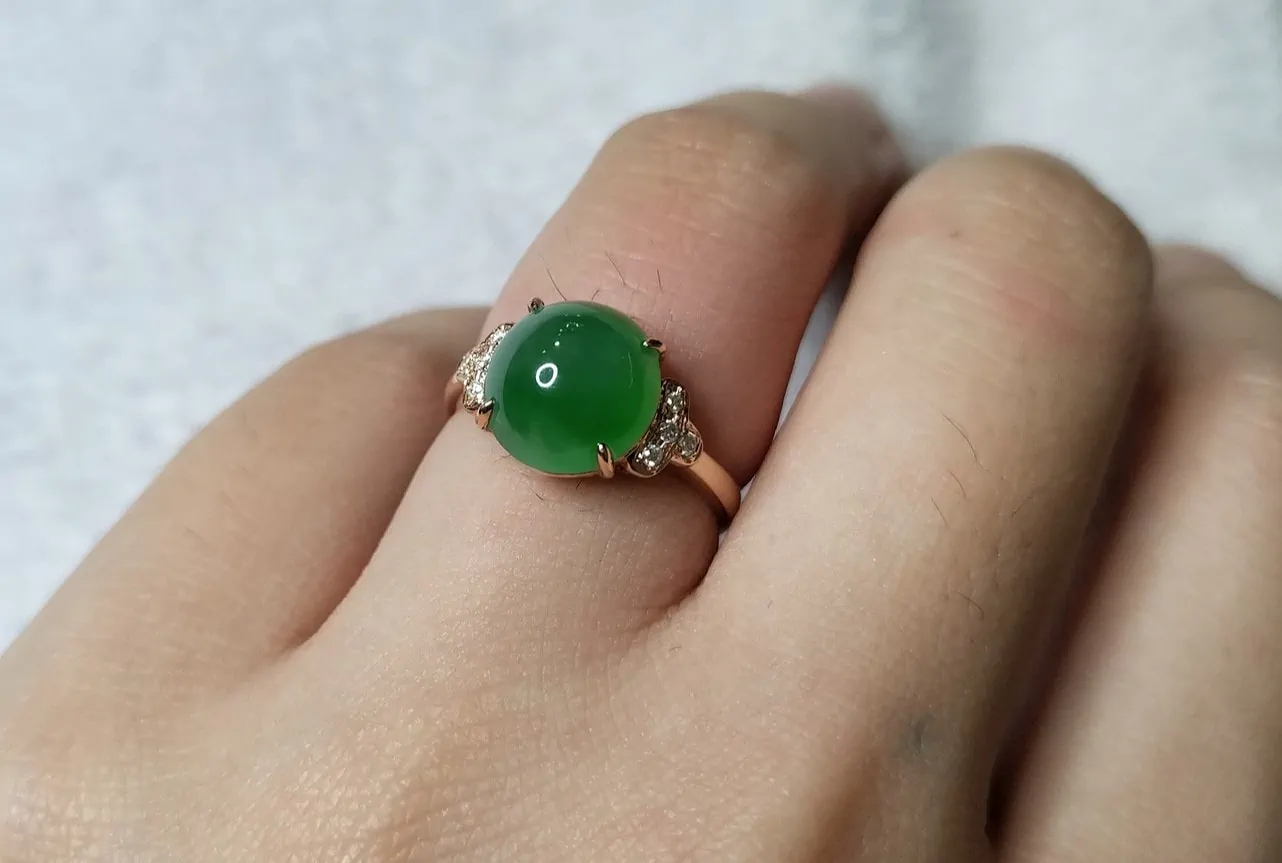
Table of Contents
Jade is one of the most sought-after gemstones in the world, and in some cultures, it holds great symbolic and historical significance. Because of this demand and due to jade’s relatively high price, many unscrupulous retailers may try to pass off fake jade as the real thing.
There is no issue with buying fake or imitation jade, as long as the jeweler is upfront with you about its origins. But what you have to look out for is being ripped off with inferior or fake jade gemstones at the price of more expensive stones.
While the only foolproof way to ensure that your jade is authentic is to take it to a gemologist, there are some tests you can do which will help you gauge if it’s likely to be fake. There are some articles online saying that these are foolproof methods. If anyone’s telling you that these tests are foolproof, then they’re trying to pull the wool over your eyes.
Quick Overview
This infographic gives you a quick overview. For the details, keep reading!
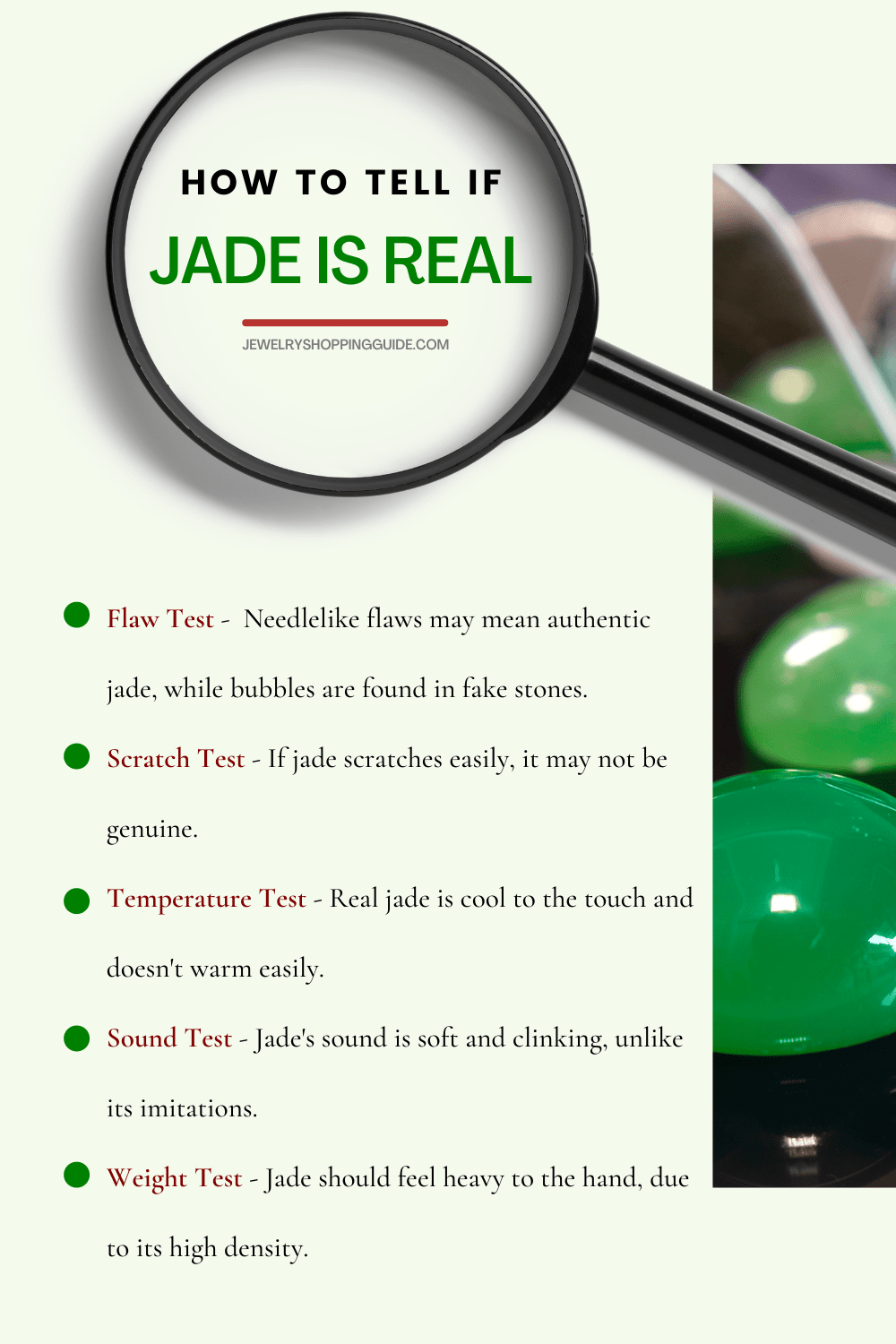
Know Your Jade: Nephrite and Jadeite
First things first, it’s important to know that there are two types of jade sold on the market – nephrite and jadeite.
Although both are called jade, there are many differences between the two. In fact, the distinctions are such that they are almost like two separate gemstones.
Jadeite is rarer, denser, harder, and more valuable than nephrite. It comes in a wider range of colors. Imperial jade, a type of vivid green jadeite, is the most valuable variety of jade on the market.
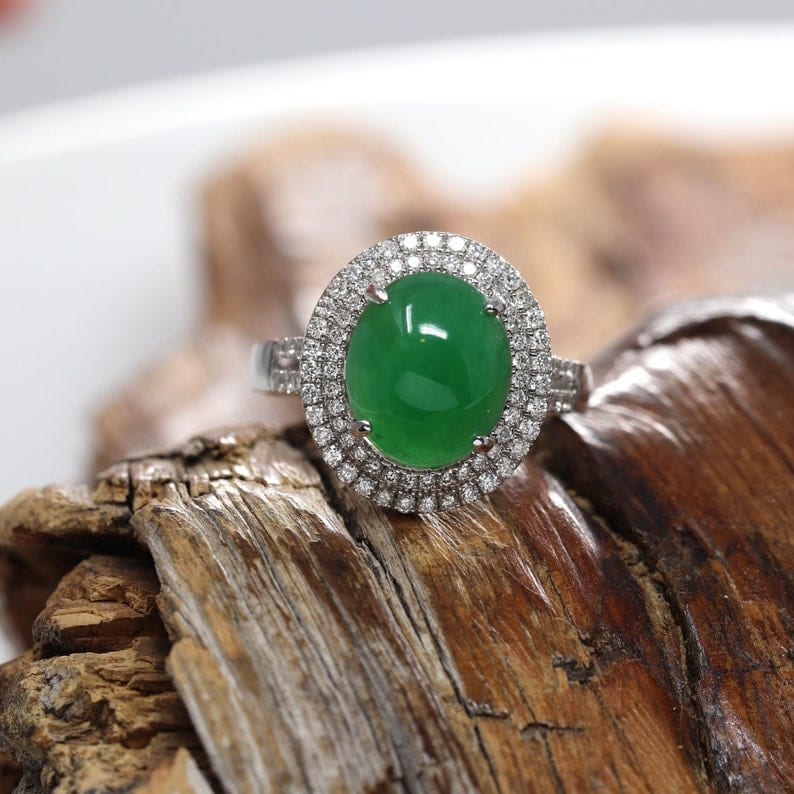
Nephrite is typically green, yellow, or white. It is more abundant than jadeite and, as a result, is more affordable. Nephrite is tougher than jadeite due to its composition.
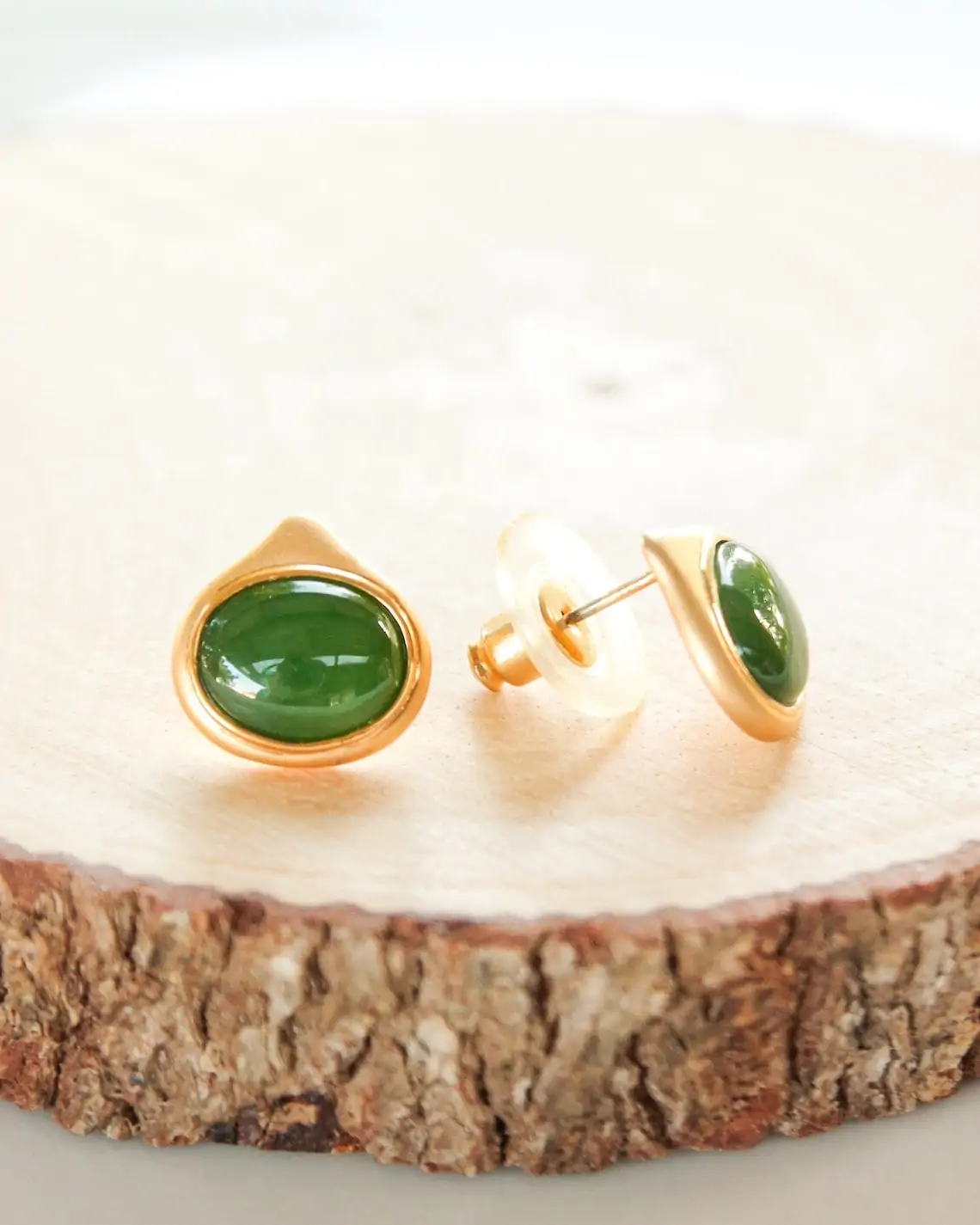
Most jade on the market today is nephrite and it can be difficult to come across high quality jadeite. While there’s nothing wrong with nephrite, it’s important to know what you’re purchasing. Some sellers may try to tell you that cheap nephrite is, in fact, expensive jadeite. This is when it becomes problematic.
This graphic shows the visual differences as well as the differences in properties between these two jade varieties.
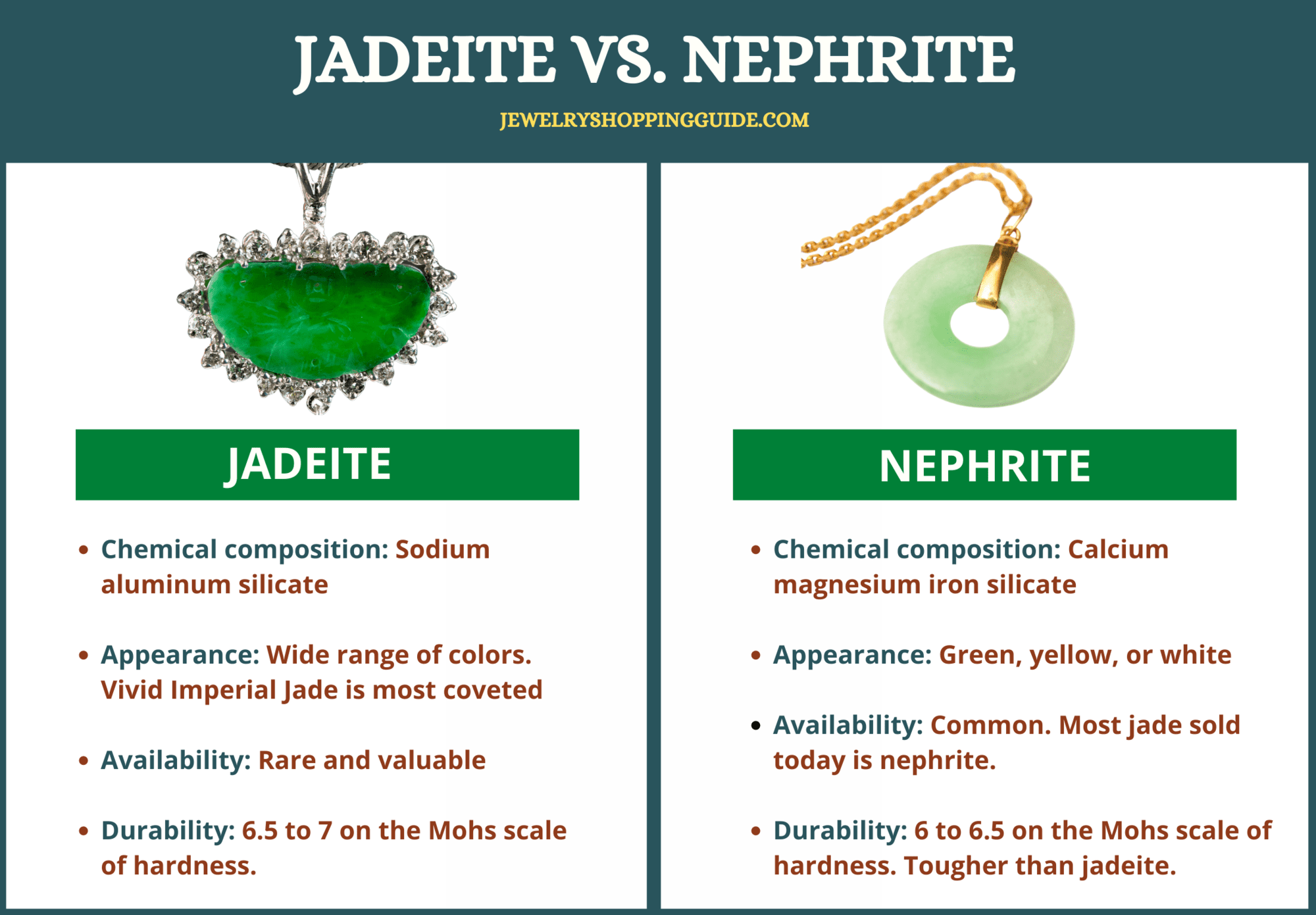
Is My Jade Fake?
There are many easy ways to check if your jade is authentic but note these aren’t fail safe methods. They will, however, give you some indications of the authenticity of the stone.
1. The Flaw Test
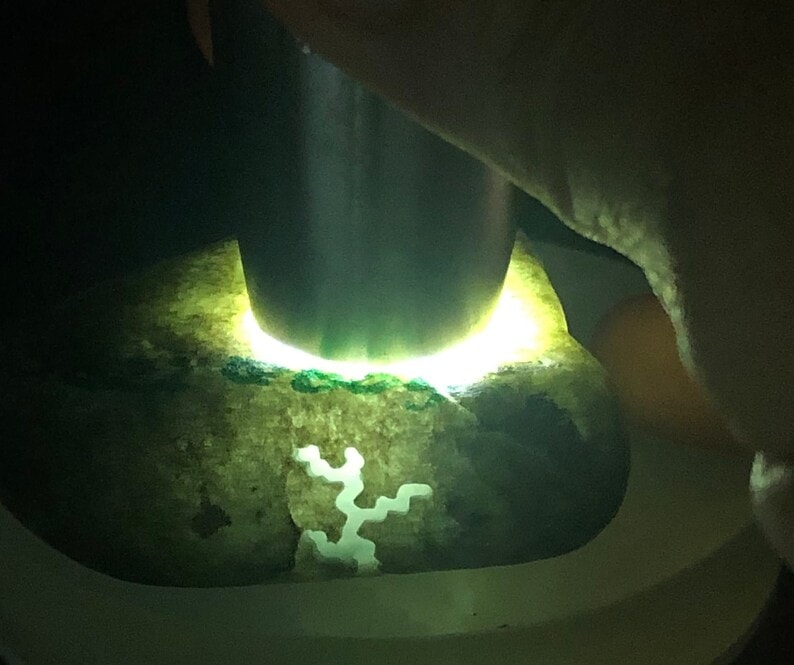
While flaws in gemstones are typically considered a drawback, they can sometimes be a blessing in disguise. Flaws in jade reveal that the stone is likely authentic.
Hold the gemstone under a source of light and carefully inspect it. Look for impurities resembling thin vein-like fibers, which are common in natural jade. If you see bubbles within the stone, it is likely that the stone is not genuine.
To examine the stone carefully, you can get yourself a jeweler’s loupe like this one, which magnifies the stone up to 30 times which will help you to have a clearer look.
Take care though. If you’re in a jade store and you start inspecting the gemstone carefully (with or without a jeweler’s loupe), you may get on the wrong side of the retailer. It’s best to ask first whether you can inspect the stone in such a way.
2. The Scratch Test
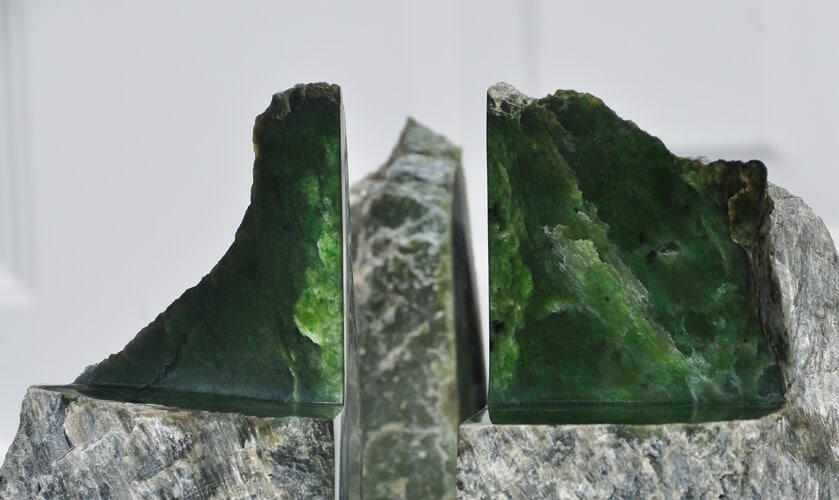
This test is one that many jade collectors swear by. Authentic jade is hard and tough and does not scratch easily. To put this in perspective, steel has a hardness of 5 on the Mohs scale while jade ranks between 6 to 7. What this means is that jade is harder than the metal and should not be affected if scratched by it.
To perform the scratch test, take a metal object like a needle, a knife, or a pair of scissors, and scratch the surface of the jade. What you’re looking for is whether the metal leaves a mark on the jade. If, however, you see that the metal has left a clear scratch in the gemstone, your jade is probably fake. Real jade cannot be scratched by steel.
When performing the scratch test on a mounted piece of jade, take care to test a part of the stone that is not readily visible, like the underside of a pendant. Never do this test in a store and even when doing it at home, take care that you do it in a way so as not to damage the setting of the jade.
3. The Temperature Test
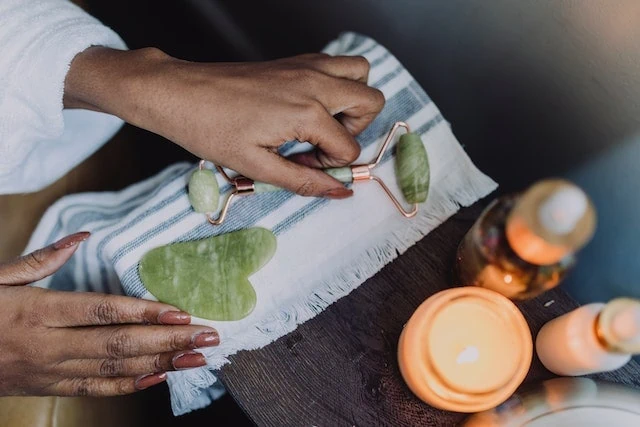
Jade is naturally very cool to the touch, regardless of the temperature of its environment. Even if placed in a warm temperature, jade will maintain its coolness. It takes a fair bit of time to warm up and cools down very quickly.
A good way to check is to hold the jade in your hand and feel its temperature. It may warm up to the touch of your hand. Set it aside for several seconds and then take it back into your hand. If it is real jade, it would have cooled down very quickly.
However, the heat test is a tricky one as it depends on a number of factors and can be quite a subjective test.
4. The Sound Test
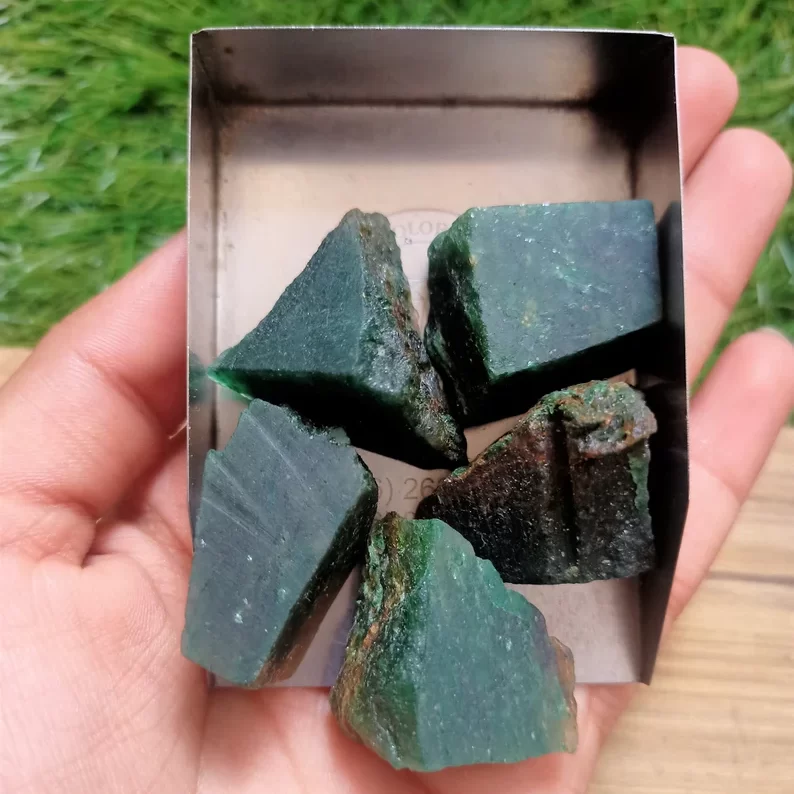
Real jade has a beautiful soft clinking sound, unlike the heavier chime of glass or the hollow sound of plastic.
Jade is dense and is often heavier than other gemstones of the same size. This test is more effective if you have a piece of genuine jade on hand.
If you have a real piece of jade in your jewelry collection, tap the gemstone you’re testing with it and listen to the sound it produces. You can also tap the gemstone with a piece of glass or something like a metal object and listen. It should have a bell-like heavy clinking sound.
5. The Weight Test
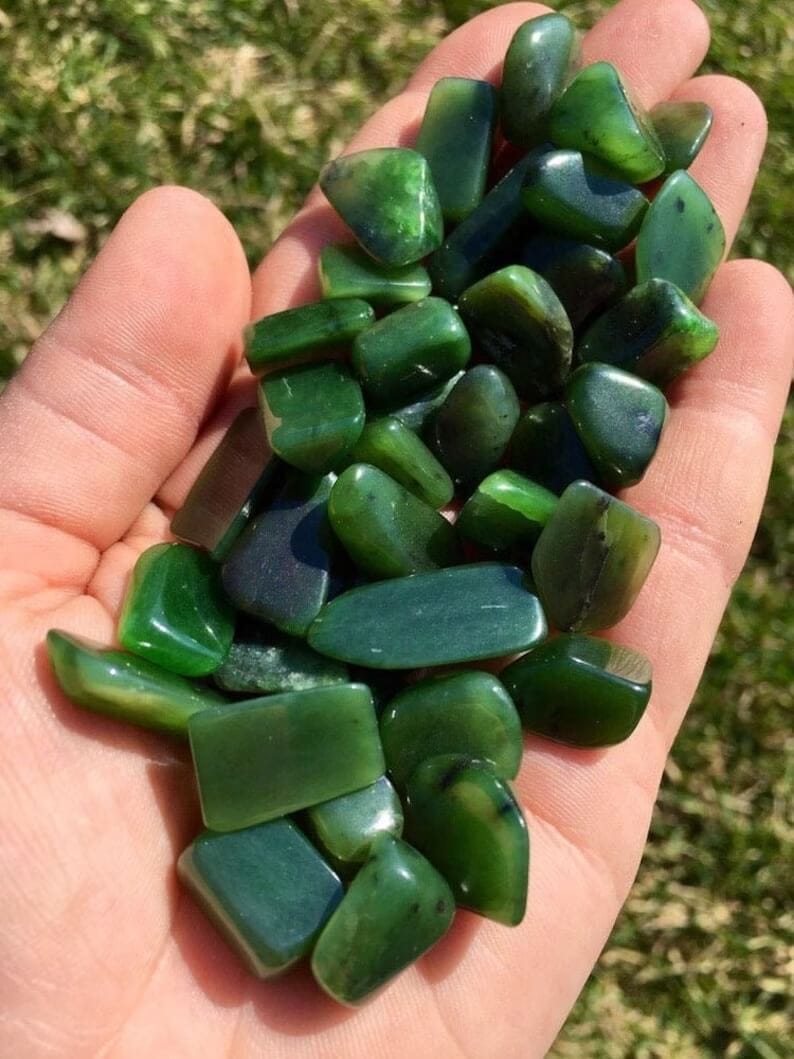
Jade is quite a dense gemstone and should feel heavy when you hold it in your hand.
While jadeite has a higher density than nephrite (nephrite – 2.90-3.03 and jadeite – 3.30-3.38 ), this difference is small compared to the weight of most other gemstones. For example, the density of glass is 2.5 and aventurine is 2.64, which are common imitations for jade.
Try tossing the stone in the air and then catching it as it falls. If it feels heavier than other stones of the same size, it’s likely that the jade is real.
A Word of Warning
While there are many ways to check if your jade is real, these tests are not in any way conclusive. As we’ve already mentioned, if anyone tells you that these above tests are fool proof, they’re pulling the wool over your eyes.
The best way to know for sure is to subject the jade to tests like X-ray Diffraction and Refractive Index, but these are expensive and require special tools and software. They aren’t practical when it comes to testing most jewelry.
Types of Jade Treatments
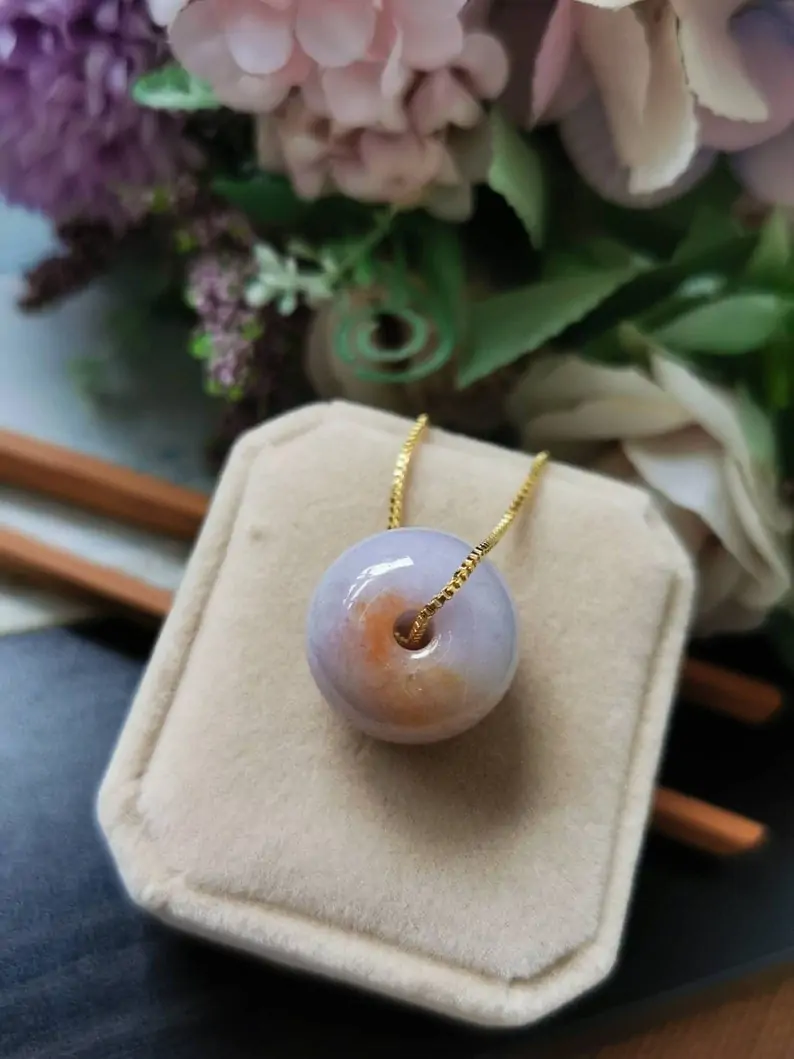
Jade is commonly treated to enhance its color and clarity. Dyeing and heating are two common treatments used and it can be very difficult to tell if the jade has been treated.
- Dyeing
This can be done in a variety of ways. Coating the jade with some sort of varnish is often done to enhance the overall look of the jade. This method can fill in any cracks or flaws, giving the gemstone a smooth and silky finish.
It can be very difficult to tell that there the piece of jade has natural flaws once coating has been done. Chemicals can also be used to dye jade to a more desirable color.
For example, this beautiful pair of jade earrings set in yellow gold is made of dyed jade, as mentioned in the description of the gemstone.
- Heat Treatments
This treatment is more common. It can change the color and tone of the gemstone, turning it either darker or lighter as required. Once heated, a jade gemstone cannot return to its natural appearance. This permanent treatment is very hard to spot.
Treated jade is not always a bad thing, as it can improve the quality of a piece of jade dramatically. An interesting point to note is that treated jade can sell for more than a natural piece of jade with an undesirable appearance.
Are All Natural Jade Stones the Same?
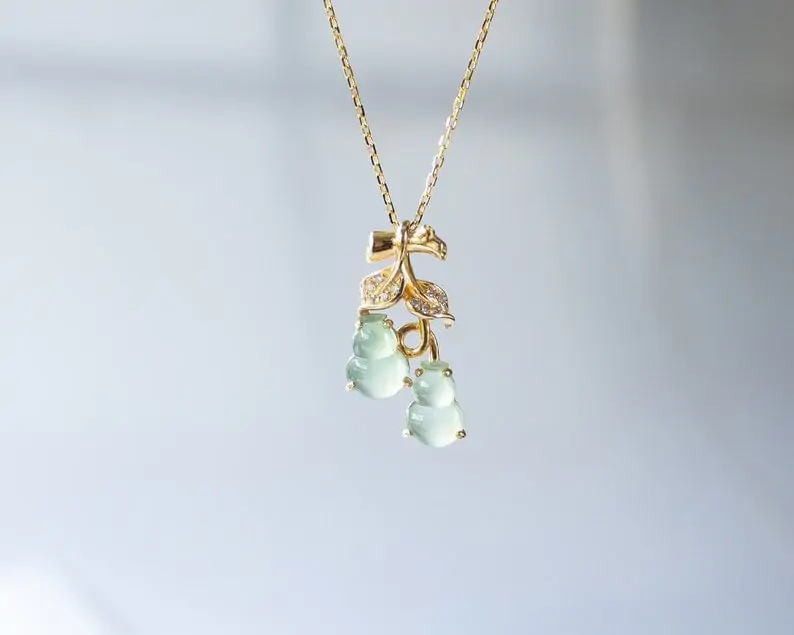
Not all authentic jade stones are the same – as we’ve just covered, they can still be treated, enhanced, stabilized, or even be just jade doublet or triplet (this is when slices of jade are glued to a plastic backing). Generally, this information will be indicated by the jade category.
- Type A Jade: Natural and untreated, with only a surface waxing with beeswax.
- Type B Jade: Chemically bleached and then filled with polymer resin to remove impurities, enhance stability, and transparency of the stone. Can be detected with infrared spectroscopy.
- Type C Jade: Dyed or stained to change the color. Translucency of the stone is often lost, and it becomes opaque.
- Type D Jade: Composite jade, such as doublets or triplets, comprised of slices of jade with plastic backings.
Gemstones That Look Like Jade
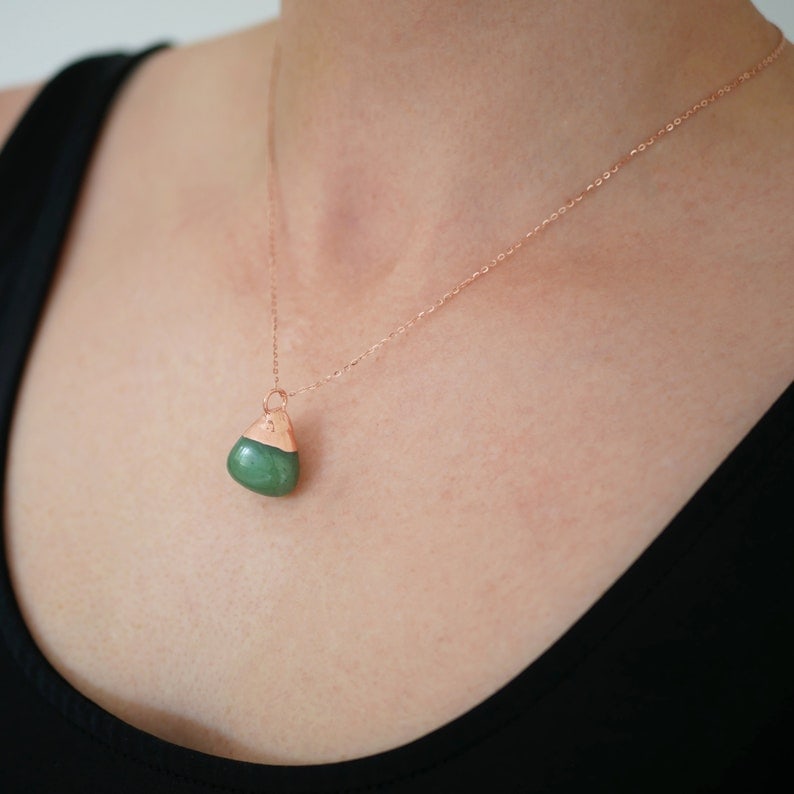
While jade is a highly valuable and beautiful gemstone, it’s not unique in its appearance. There are several natural gemstones that look very similar to jade.
1. Aventurine
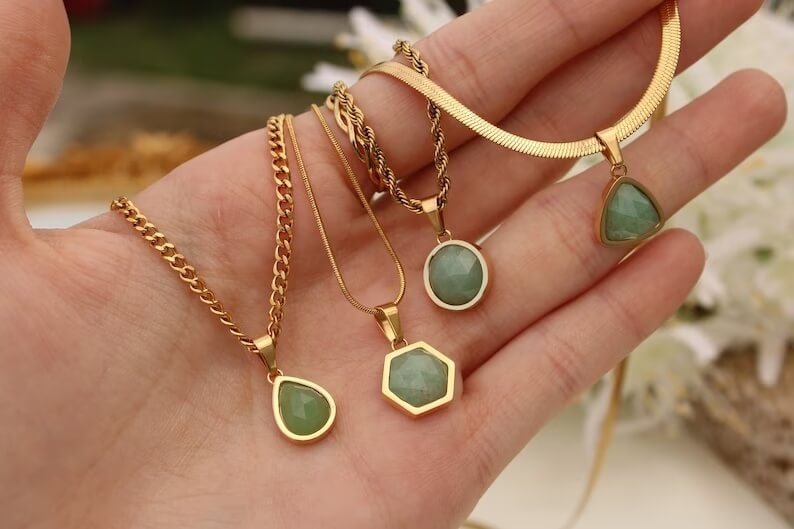
One such gemstone is aventurine. It is so similar to jade that it’s sometimes known as Indian or Australian jade. However, aventurine is a variety of quartz and is not of the same mineral family as jade.
2. Greenstone
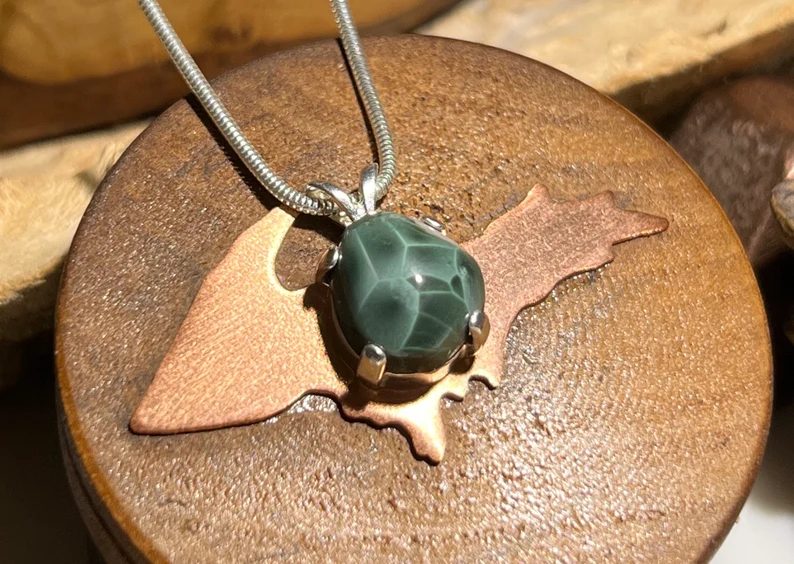
Greenstone, or Pounamu as it is known by the Maori of New Zealand, is nephrite jade but was given the name greenstone by early European explorers.
The name continues to stick, even though calling it nephrite would make things easier. Greenstone is found in a few different varieties in New Zealand.
3. Serpentine
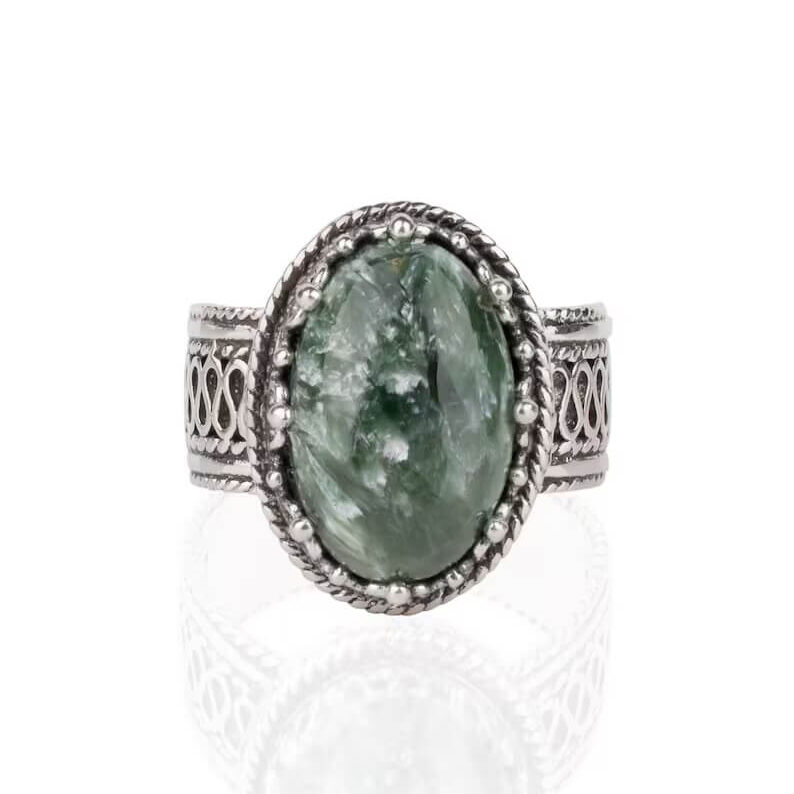
Serpentine refers to a group of minerals that sometimes may look like jade. When polished, it has a waxy luster and may be attractive like jade, with similar green, brown, and yellow hues.
However, jade has a much better polish and smoothness than serpentine, which is noticeable on close observation.
4. Malaysia Jade
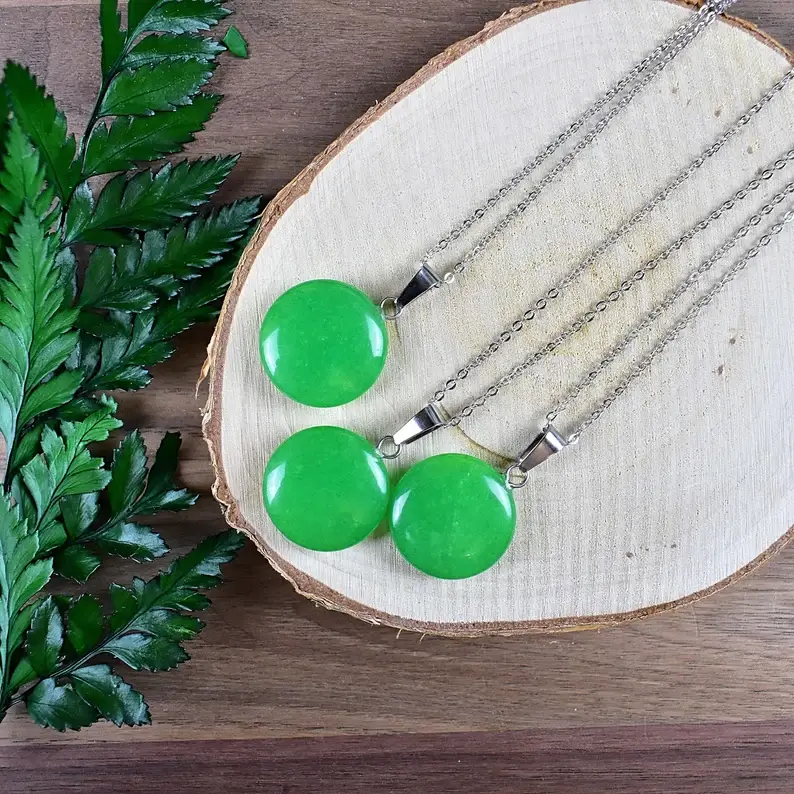
This gemstone is highly popular in Asian countries, but it’s not jade at all. Instead, it’s a type of quartz that can look like high-quality jade. Malaysia jade can be dyed into any color, but it’s typically found in red, blue, lavender, turquoise, pink, and pure white shades.
5. Transvaal Jade (Grossular Garnet)
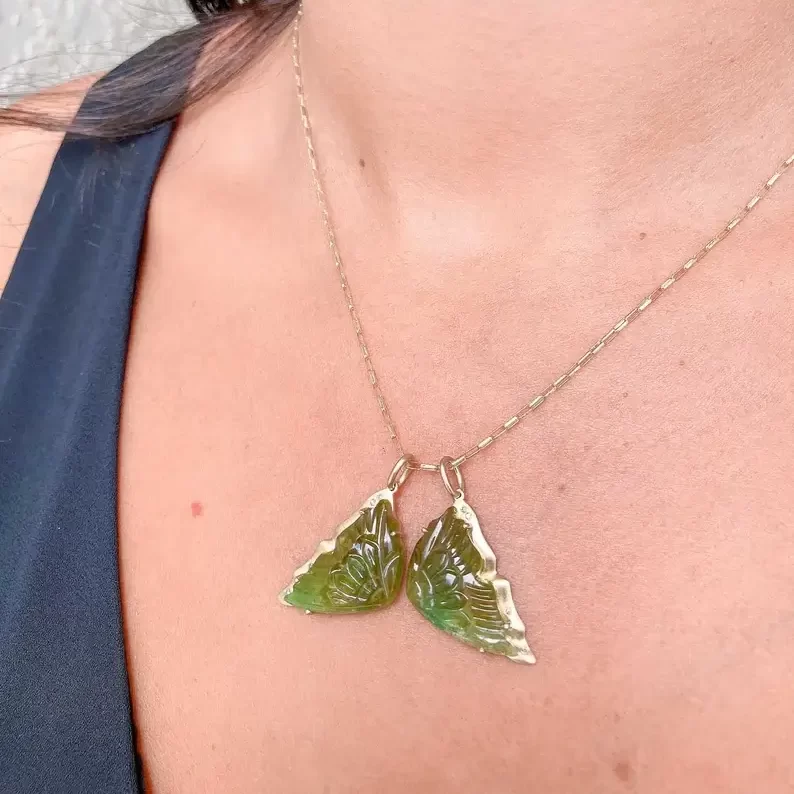
This stone typically comes in white, but can also be found in green, red, and yellow varieties. While green grossular garnet looks like jade, it’s much more affordable and abundant. Some retailers call it Transvaal jade as a marketing tactic to increase its value.
Where to Buy Jade
Because identifying real jade from fake is very difficult and often impossible to do conclusively, it is best to purchase from a reputable retailer that you can trust. The retailer should disclose to you any treatments or enhancements that the gemstone may have undergone and should have a fair price on their jade.
If you’re purchasing a valuable piece of jade, most retailers will provide a certificate of authenticity. This means that an independent lab has examined, scanned, and identified the jade and given it a grade from A to D. However, retailers often only do this for grade A jade and don’t cover the cost for the other grades.
Finally, there’s nothing wrong with a fake or imitation jade gemstone as long as you know what you’re getting. The problem is if the retailer doesn’t disclose this information and is selling the fake jade at authentic prices.
Etsy has a wide range of jade jewelry, from authentic antiques to inexpensive dyed jade jewelry. This gives you a wide range of options at various price points. Again, do your due diligence, and ensure that the store is reputable. Check out our guide on how to shop on Etsy if you’d like some pointers.
Amazon has a wide variety of jade jewelry on offer but finding the right piece requires investigation. Keep an open line of communication with the retailer and ask all your questions prior to purchase. Check that there is a good returns policy just in case your jade isn’t what you expected it to be.
FAQs About Jade
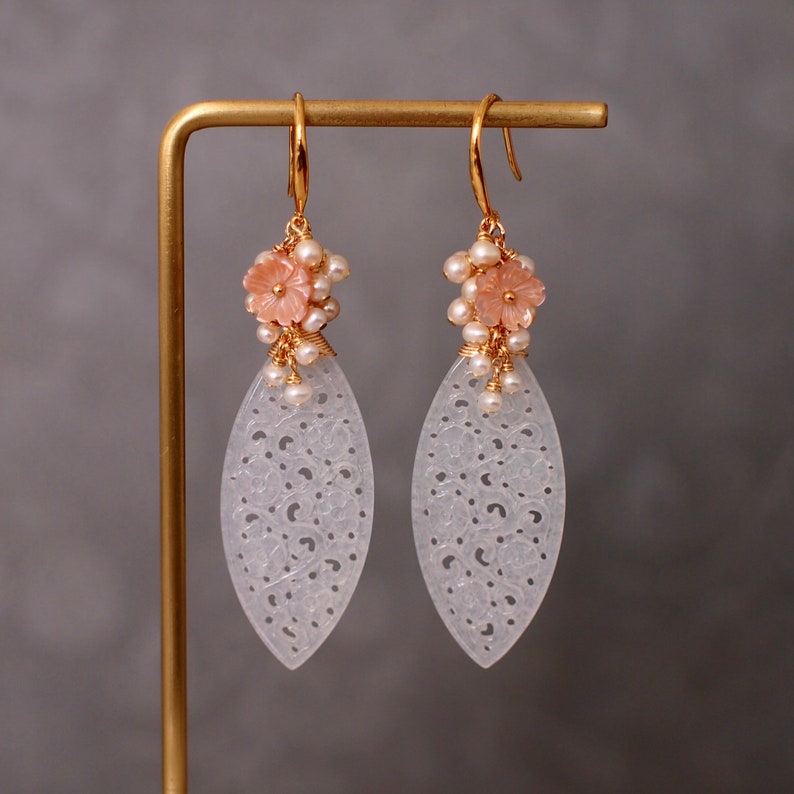
1. Does real jade feel warm to the touch?
Yes, real jade feels cool in your hands, and doesn’t heat up easily even when rubbed in your hands. Fake jade has a warmer feel.
2. What’s the most expensive type of jade?
Imperial jade with vivid green hues, like this antique carving, are the most expensive and highly sought after types of jade.
3. How costly is real jade?
Authentic jade can be very costly, with prices increasing all the time. According to this article from Forbes, in the last decade, the price of jade has increased about tenfold, and now costs around $3000 an ounce for the finest grades.
4. Is jade durable?
Jade is highly durable and tough. It resists chipping, breaking, or cracking.
Wrapping Up
While it’s important to seek expert advice or purchase from reputable dealers, many factors can influence jade’s appearance and you can’t guarantee authenticity simply by performing these tests or looking at the jade. So, while these tests are great to give you an idea about the jade in general, you really don’t want to rely on any of them 100%. For the most accurate results, take your jade to a gemologist and purchase from a reputable store.



